#french military
Text


French infantry officers 'Sabre à Garde Tournante'
This is my second 'Sabre à Garde Tournante' which translates to sabre with a rotating guard, referring to the unique side bar that folds in front of the knuckle-bow when not in use.


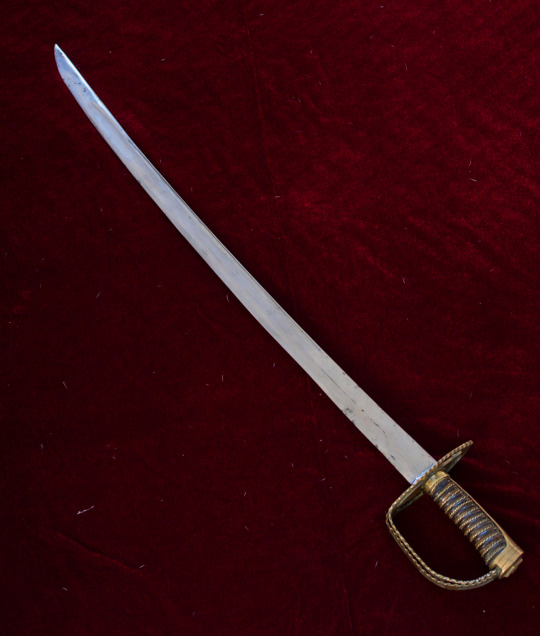
This style of guard became popular in France around 1784 and remained fashionable until about 1800. For a short period the English also followed this trend and they can occassionally be found on 1788 Pattern light cavalry officer swords or 1786 regulation infantry officers swords. But the style faded out with the introduction of the 1796 Patterns. Interestingly Austria actually adopted the rotating guard into their regulation patterns and there it remained in use until the middle of the 19th Century.
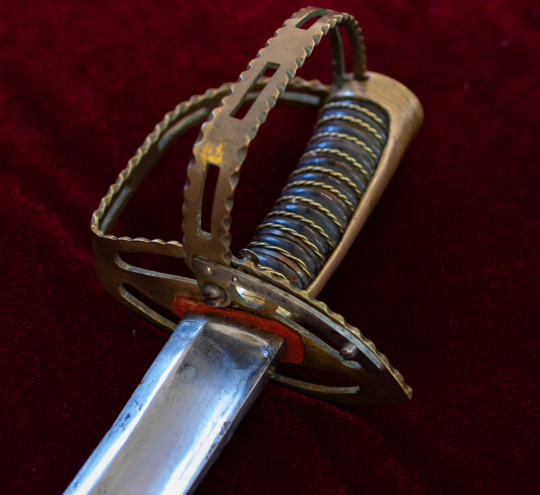
This example has a single side guard that folds out to the outside of the grip that has been scalloped along the edge with a decorative feature that is frequently seen on these swords.

The short blade length and the single frog stud on the scabbard chape mark this as having belonged to an infantry officer of a lower rank who still marched with his men.
Stats:
Overall Length - 765 mm
Blade Length - 740 mm
Curve - 14 mm
Point of Balance - 110 mm
Grip Length - 125 mm
Inside Grip Length - 105 mm
Weight - 610 grams
#sword#sabre#rotating guard#French military#antiques#military antiques#18th Century#napoleonic wars#French swords#Sabre a Garde Tournante
34 notes
·
View notes
Text
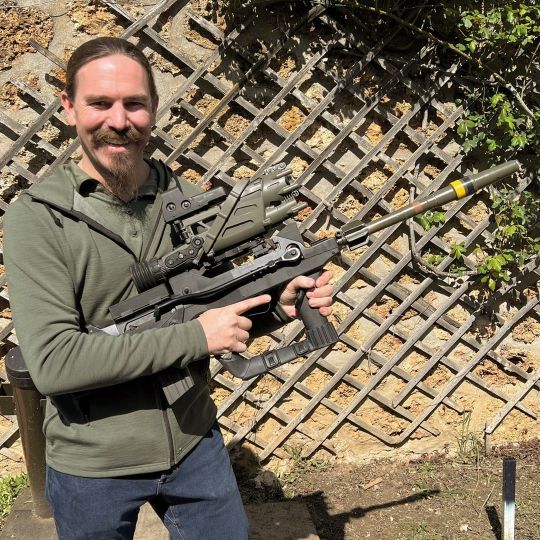
An Ian McCollum, looking extremely happy; he is holding a French FAMAS F1 FÉLIN 5.56mm assault rifle, with the FÉLIN computerized scope (unclear on variant; this could be the standard infantry night vision scope, or the squad commander's thermal sight) with a piggyback EOTech holographic sight, and a 40mm BTRG AP/AV (aka AP-AV-F2) multi-purpose anti-personnel/anti-vehicle rifle grenade mounted to the muzzle.
Source: forgottenweapons on Instagram
23 notes
·
View notes
Text



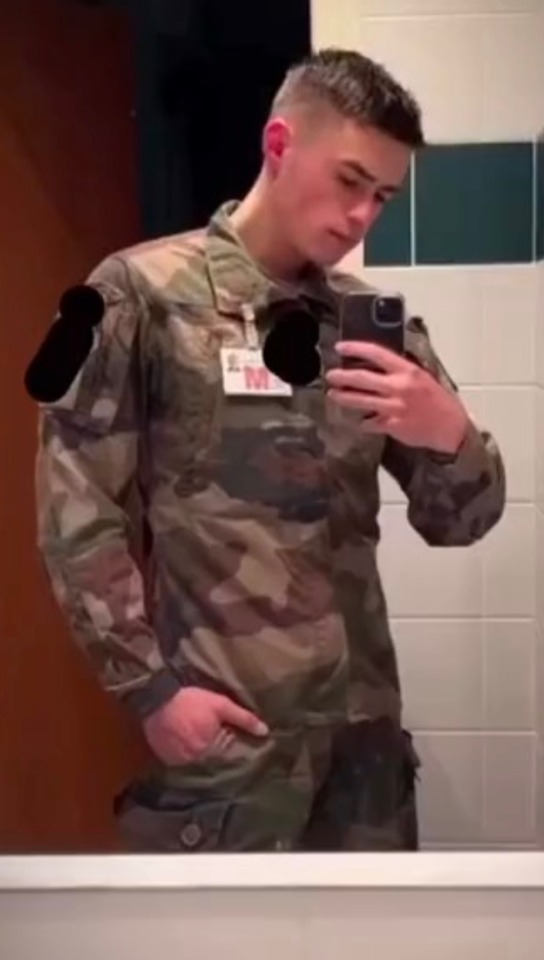



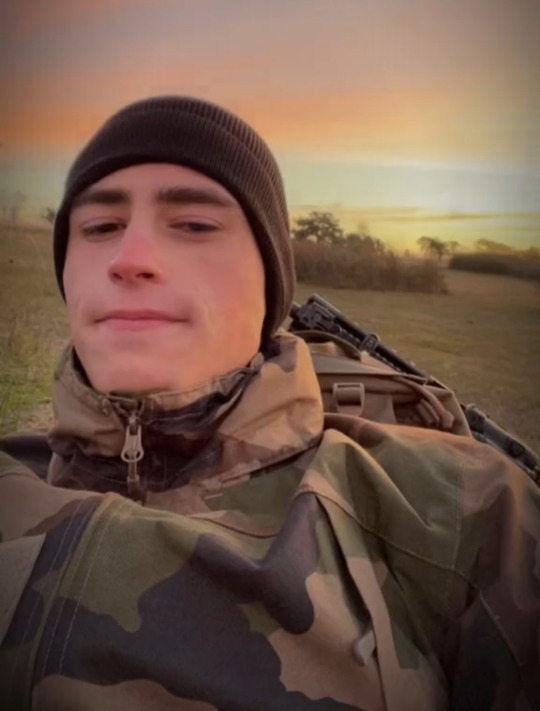
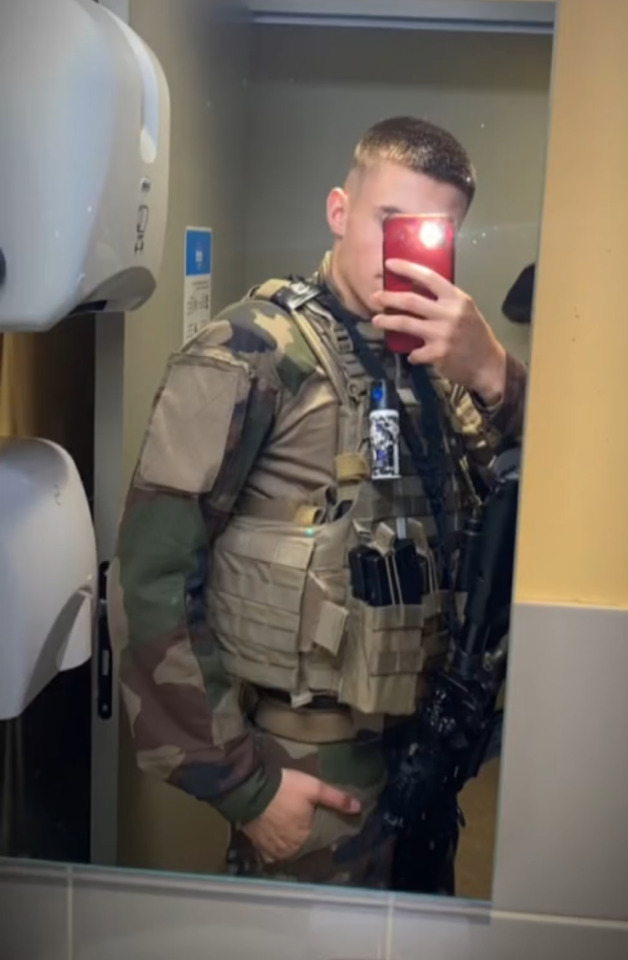

Happy New Year to all of y’all out there!! A lil late but heartfelt.
Shout out today to our French military brothers…
#military life#military uniform#military gear#militär#militaire#military#militarymencollection#french#french military#hothunks#handsome#military stud#stud#cuteness#cute boys
215 notes
·
View notes
Text

French 6th Dragoon Regiment, Crimean War 1854-1856
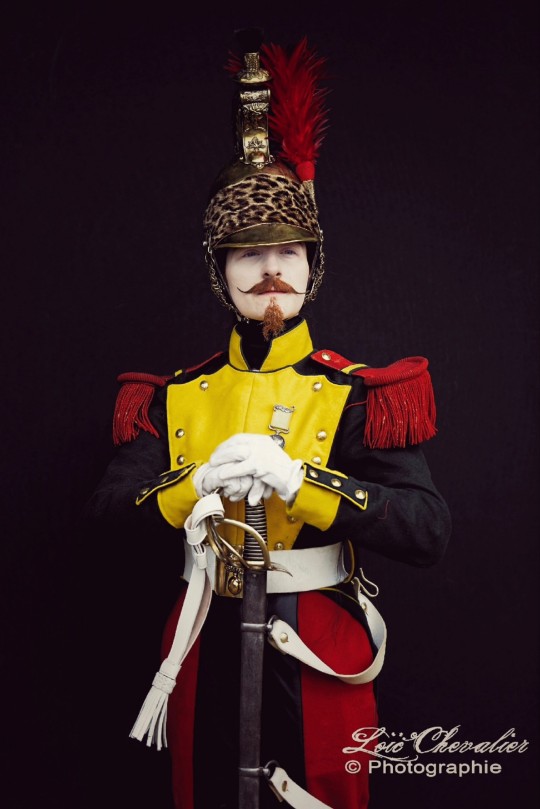
#french history#military history#cavalry#history#military aesthetic#dragoon#napoleon bonaparte#reenactment#napoleon iii#napoleon 3#second empire#french military#Crimean War#light cavalry#eupatoria
41 notes
·
View notes
Note
Hello, what is the absolute UNIT next to this dude?

Shell for the French Obusier de 400 Modèle 1915/1916 railway howitzer.
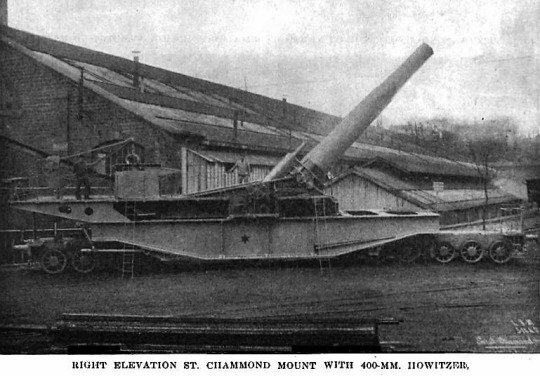
The howitzers were made from surplus 340mm naval gun barrels, shortened to 25 calibers and bored out to 400mm, then placed onto a railway carriage for transport and firing. Only 12 were made.
The projectiles used varied in weight between 641–900 kg (1,413–1,984 lb):
* Armor piercing: weight 641 kg, maximum velocity 465 m/s, maximum range 16 km
* Common: weight 890 kg, meximum velocity 465 m/s, maximum range 15.1 km
* High-explosive: weight 900 kg, maximum velocity 530 m/s, maximum range 15.8 km
Their range was between 15.1 and 16 km (9.4 to 9.9 miles) at a firing angle of 65 degrees. Compared to its parent naval gun with a range of 18 km, this was sufficient.
The howitzers were used at the Battle of Verdun, Battle of the Somme, the Second Battle of the Aisne, and at least two were operated by United States forces (53rd Coast Artillery Regiment, Coast Artillery Corps). All survived the war.
In World War 2, all twelve howitzers were used to reinforce the Maginot Line in the Alsace and Lorraine areas. They saw no action due to a lack of targets in their assigned sectors. After the French Armistice, eight of the guns would be pressed into service by Germany as the 40 cm Haubitze (Eisenbahn) 752(f). Six of these eight captured guns would see use during the Siege of Leningrad.
None are thought to have survived the Second World War.
8 notes
·
View notes
Text

A French Soldier during an airborne operation as part of Exercise Swift Response 17 Phase II near the Joint Multinational Readiness Center Hohenfels, Germany.
The U.S. Army photo by Gertrud Zach (2017).
12 notes
·
View notes
Text

2024. British and French Soldiers mount guard together at Buckingham Palace (London) and The Elysee Palace (Paris) for the first time in history to mark the 120 anniversary of the Entente Cordial 8th April 1904.
Vive la France! God Save the King!
2 notes
·
View notes
Text
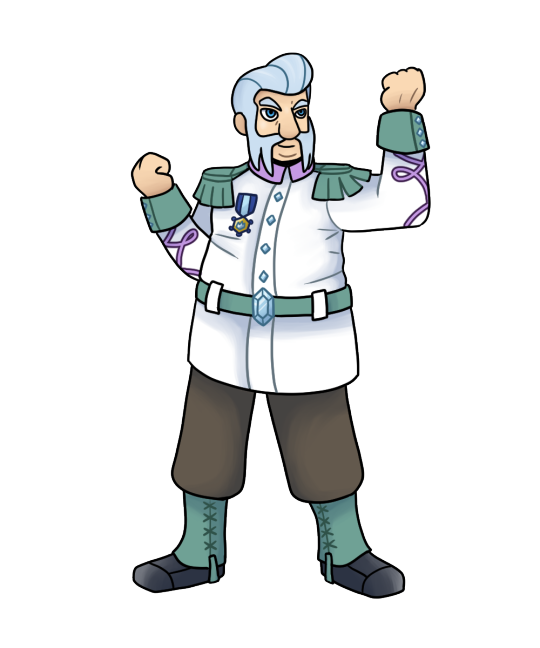

Wulfric in a Sygna Suit! If you couldn't guess, his partner is abomasnow :D
His outfit is inspired by french military outfit, but the parading one for the 14th july procession
Once again, drawn for @choochooboss' lovely magma session!
#wulfric#pokemon#gym leader wulfric#abomasnow#sygna suit#pokemon masters ex#french military#fashion#military fashion#LBArt
6 notes
·
View notes
Text
History Shorts #17

WW1 shook the world, consuming millions of human enlistees and victims from all over. The brutal war became known for its diversity in warfare. From the aftermath of new world combat to fronts that engrossed the entire edge of nations. One unit that proves this is the thousands of dogs that served on multiple sides in the war.
Dogs served many different roles in WW1, their most infamous being the Mercy Dog. Mercy Dogs are messengers, paramedical delivery, and the search and rescue for wounded soldiers on the battlefield. Carrying a saddlebag with an assortment of items, they'd be sent out to locate to the injured.
Mercy Dogs were big in France, Germany, Italy, Austria, and the UK. Dogs alone where found serving in about all sides that participated in the war.
Many praised the Mercy Dogs for their unique ability to tell whether or not a wounded soldier is a dead man. The dogs were sighted being able to tell when individuals that even medics wrote off as dead were still kicking. They'd also provide comfort to dying soldiers, staying by their sides. Some Mercy Dogs were trained to protect the wounded from the enemy.
Although the exact number is unknown, dogs in general died in the thousands during the war, just like their human counterparts.
Sgt. Stubby, a famous American dog from the war has his own monument in Middletown, Connecticut. The National WW1 Museum also has a dedicated section to the dogs of WW1. France and Germany hold several memorials in the name of the dogs, as well as other war animals.
Dogs today still serve in warfare all over the world. Being man's best friend, always by our side, it is likely it won't change until war itself stops.
#ww1#wwi#great war#french military#mercy dogs#history#history shorts#dogs#german military#british military#military history#us history
2 notes
·
View notes
Text

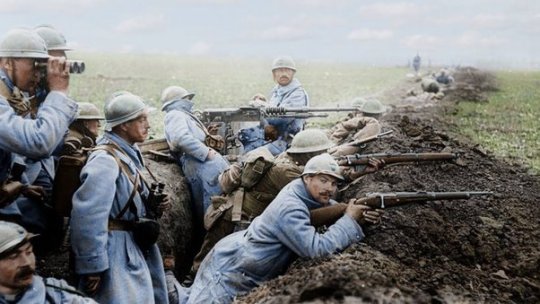


The Battle of Verdun, lasting from the 21 February - 18 December 1916, was the longest battle of the First World War. As with much of the Western Front, Verdun became a very static battle with the Germans launching offensives, but the French line held. The Germans would attack one side of the line, and it would hold. The Germans would attack the other side of the line, and it would hold. The battle became a symbol of the French and their tenacity.
1 note
·
View note
Text
I'm sorry; don't intend to rain on your Friday night fun. However, I hope you read this sometime soon. France is preparing to fight Russia.
youtube
1 note
·
View note
Text
youtube
I love french military music , and i think this one represent everything about whats been a real french .
1 note
·
View note
Text

FAMAS F1 with experimental 50-round extended magazine.
9 notes
·
View notes
Text
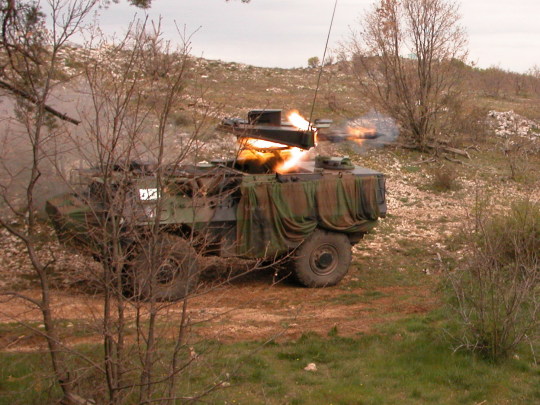
A VCAC MEPHISTO from 2e Régiment étranger d'infanterie firing a HOT missile, September 2007.
The French VCAC MEPHISTO is a variant of the French VAB (Véhicule de l'Avant Blindé). Its name stands for Véhicule de Combat Anti-Char, Module Elévateur Panoramique HOT Installé Sur Tourelle Orientable, or Anti-Tank Combat Vehicle, HOT Panoramic Elevation Module Installed on Adjustable Turret.
The MEPHISTO is an anti-tank missile carrier, firing the Euromissile HOT anti-tank guided missile. The MEPHISTO carries 12 missiles, with four in the turret, and eight in the hull, able to be reloaded by lowering the turret. The vehicle has mostly left French service, with a majority being sold to Morocco and Lebanon.
1 note
·
View note
Text

#military history#history#french history#cavalry#reenactment#dragoon#military aesthetic#napoleon#napoleon bonaparte#napoleoniii#napoleon3#napoleonic#grandearmee#french reenactment#french military#frev
9 notes
·
View notes
Text
Saxophone History Podcast Episodes 1 & 2
I’m very pleased to be publishing the first couple of episodes of a new podcast I’ve been working on for a while. It’s called The Saxophone History Podcast and the idea is to take a look at the lives of the most interesting people who have played the saxophone throughout history. It’s a thoughtful, researched, and slightly irreverent look at our collective history as saxophonists. I’m going to…

View On WordPress
#Adolphe Sax#andrew d meyer#Andrew Meyer#Belgium#D&039;Indy#Debussy#Elise Hall#France#French Military#Loeffler#Michele Carafa#Military Bands#Paris#saxophone#Saxophone History Podcast
0 notes